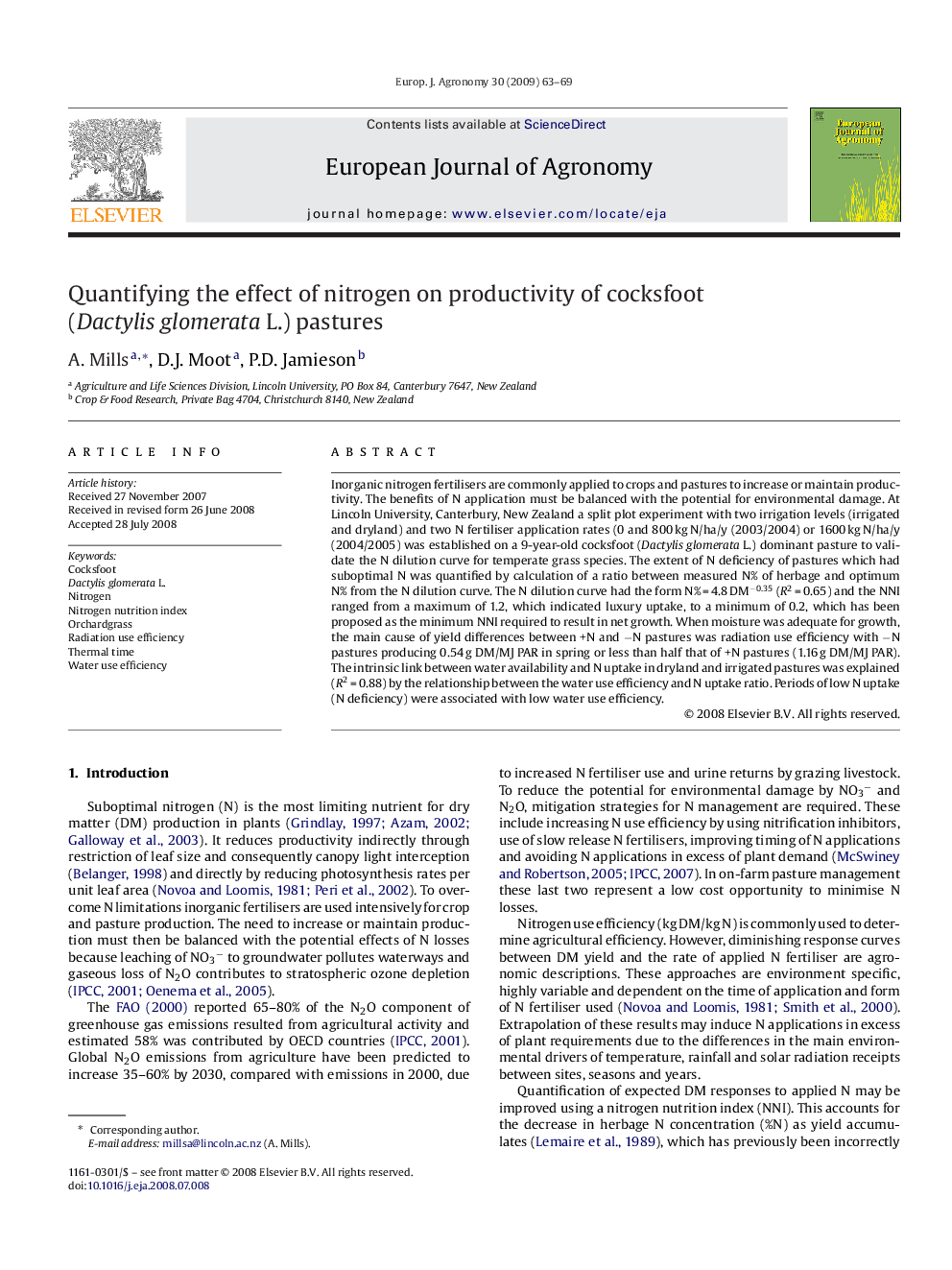| Article ID | Journal | Published Year | Pages | File Type |
|---|---|---|---|---|
| 4509504 | European Journal of Agronomy | 2009 | 7 Pages |
Abstract
Inorganic nitrogen fertilisers are commonly applied to crops and pastures to increase or maintain productivity. The benefits of N application must be balanced with the potential for environmental damage. At Lincoln University, Canterbury, New Zealand a split plot experiment with two irrigation levels (irrigated and dryland) and two N fertiliser application rates (0 and 800 kg N/ha/y (2003/2004) or 1600 kg N/ha/y (2004/2005) was established on a 9-year-old cocksfoot (Dactylis glomerata L.) dominant pasture to validate the N dilution curve for temperate grass species. The extent of N deficiency of pastures which had suboptimal N was quantified by calculation of a ratio between measured N% of herbage and optimum N% from the N dilution curve. The N dilution curve had the form N% = 4.8 DMâ0.35 (R2 = 0.65) and the NNI ranged from a maximum of 1.2, which indicated luxury uptake, to a minimum of 0.2, which has been proposed as the minimum NNI required to result in net growth. When moisture was adequate for growth, the main cause of yield differences between +N and âN pastures was radiation use efficiency with âN pastures producing 0.54 g DM/MJ PAR in spring or less than half that of +N pastures (1.16 g DM/MJ PAR). The intrinsic link between water availability and N uptake in dryland and irrigated pastures was explained (R2 = 0.88) by the relationship between the water use efficiency and N uptake ratio. Periods of low N uptake (N deficiency) were associated with low water use efficiency.
Keywords
Related Topics
Life Sciences
Agricultural and Biological Sciences
Agronomy and Crop Science
Authors
A. Mills, D.J. Moot, P.D. Jamieson,
